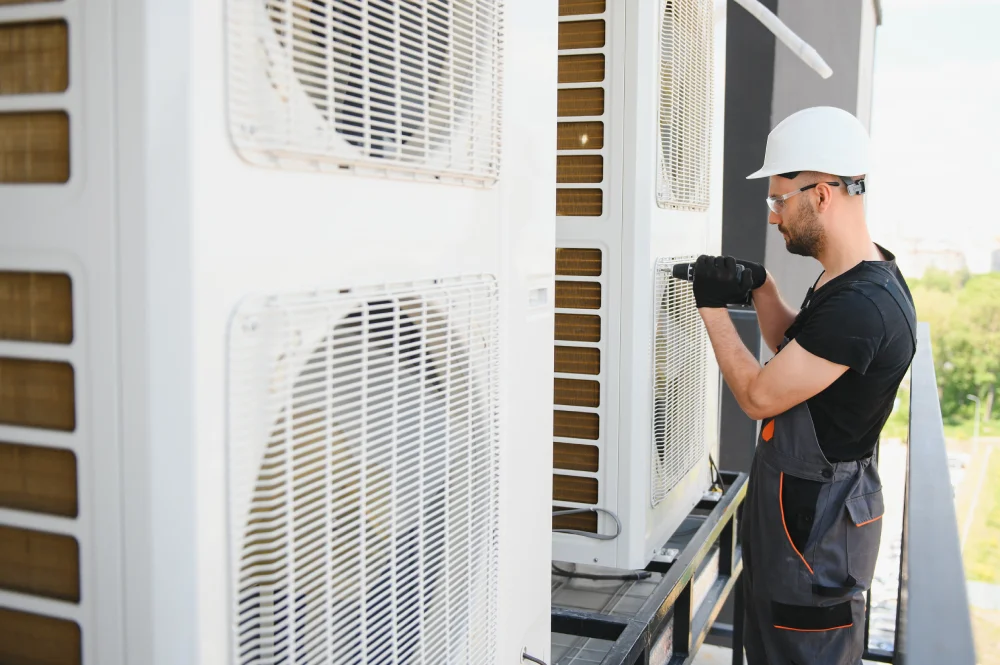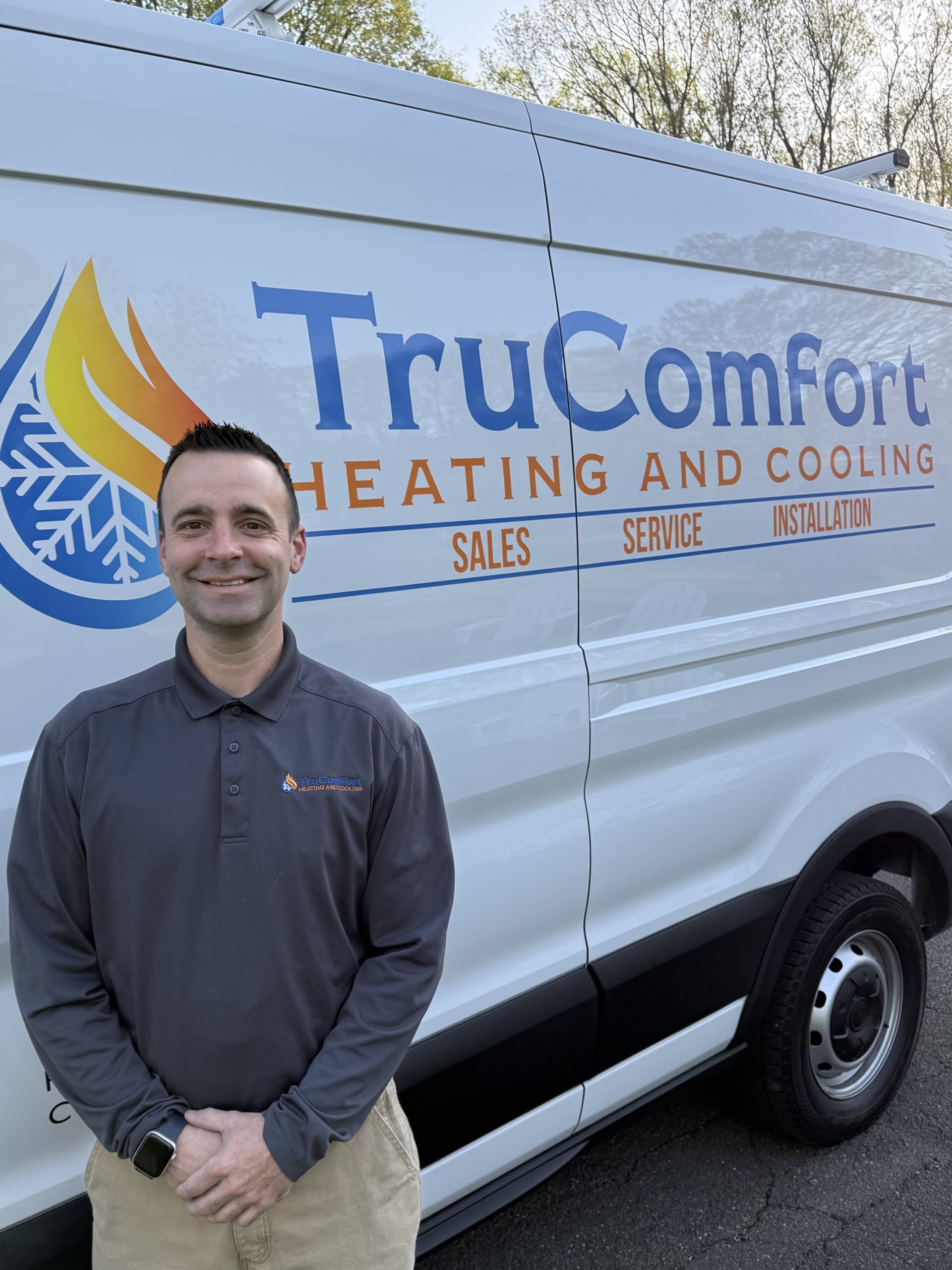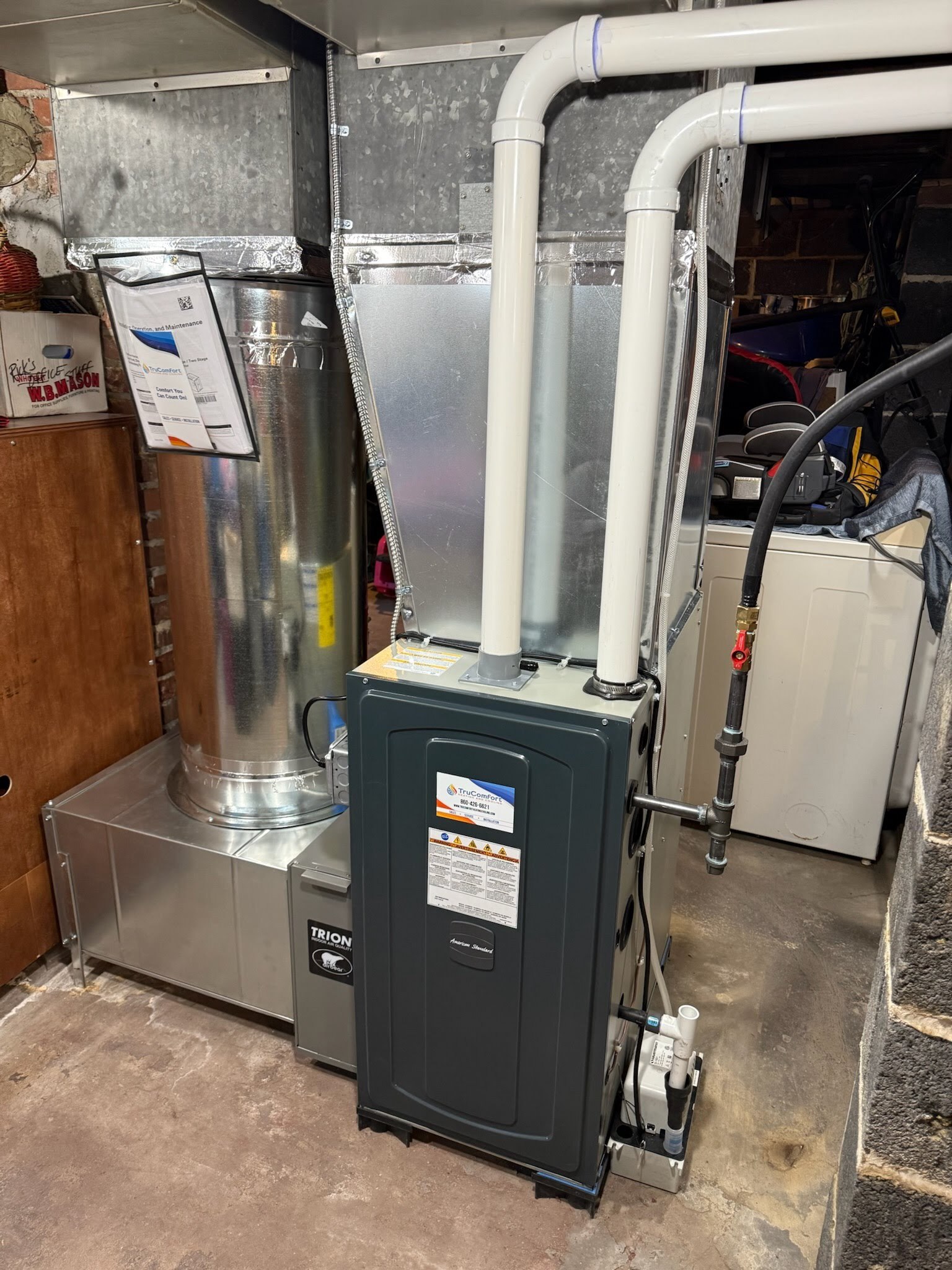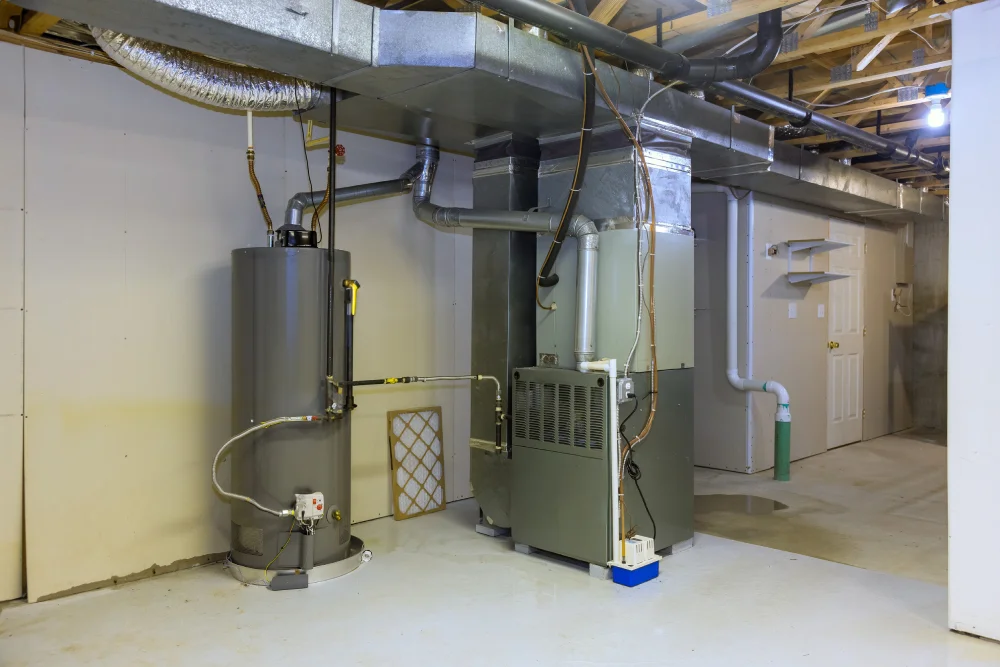Get Ready for Connecticut’s Heating Season
Get Ready for Connecticut’s Heating Season – My Guide to Efficiency, Upgrades, and Maintenance
Hello! I’m the owner of TruComfort Heating and Cooling, a local HVAC professional in Southington, Connecticut. With winter around the corner, I want to share my personal tips and insights on getting your heating system ready for the season. Preparing now isn’t just about staying warm. It’s about staying safe, saving money, and avoiding mid‐winter emergencies. In this guide, I’ll walk you through how I help homeowners boost their heating efficiency, decide if it’s time for an upgrade, and keep everything running smoothly. Let’s dive in!
Why Preparing Your Heating System Matters
Living in Connecticut, I know how cold winters in New England can get. The last thing you want is a furnace breakdown on a frigid January night. Preparing your heating system for the season matters because it ensures reliable comfort when temperatures drop. It can also save you a lot on energy bills. A system that’s well maintained and efficient will burn less fuel to keep you warm, which means lower heating costs for you. Taking the time to prep now helps catch small issues before they turn into big, expensive problems when your furnace is working overtime. A little preventative care now leads to a safer, more comfortable, and cost‐effective winter.



Signs You Might Need a Heating Upgrade
It’s 15–20+ Years Old: Age isn’t just a number for furnaces and boilers. Most home heating systems start to lose efficiency and reliability after about 15 or 20 years. If yours is approaching that age, or even older, I advise planning for a replacement. Newer models are more efficient and can save you money in the long run.
Rising Energy Bills: Have you noticed your heating bills creeping up each winter, even though your usage hasn’t changed much? An aging or inefficient furnace might be working harder than it should. New high‐efficiency furnaces use less fuel to produce the same heat. Upgrading to a high‐efficiency furnace can save homeowners up to 20 percent on heating bills.
Uneven or Inadequate Heat: Maybe one room feels like a sauna but another is ice‐cold. Uneven heating can signal that your system is struggling to distribute warm air throughout your home. It could be due to duct issues or just an old furnace that can’t push air like it used to. This is uncomfortable and a hint that an upgrade or major fix may be needed.
Uneven or Inadequate Heat: Maybe one room feels like a sauna but another is ice‐cold. Uneven heating can signal that your system is struggling to distribute warm air throughout your home. It could be due to duct issues or just an old furnace that can’t push air like it used to. This is uncomfortable and a hint that an upgrade or major fix may be needed.
Frequent Repairs and Strange Noises: If you’ve had to call a repair technician multiple times in the last year or two, that’s a red flag. Continual breakdowns mean your heater is nearing the end of its life. I often tell my customers that if repair costs are adding up to a significant chunk of a new system’s price, it’s more cost‐effective and far less stressful to invest in the new system. Also, pay attention to banging, clunking, or screeching sounds or any weird smells when your furnace runs. These can indicate serious issues, from failing components to safety hazards like cracks in the heat exchanger, and shouldn’t be ignored.
Dust, Soot, or Dry Air: Old furnaces that aren’t working well can start affecting your indoor air quality. You might see extra dust around the house or even soot near heating vents. You could also experience very dry air in winter. While some dryness is normal in cold weather, an excessive change might mean your system isn’t filtering or humidifying properly. Newer systems often come with better filtration and even humidity control, which is a bonus reason to upgrade if you’re seeing these issues.
What are the benefits of upgrading? From my perspective, a new heating system isn’t only about avoiding problems. Modern high‐efficiency furnaces and heat pumps deliver more heat with less energy, so you get the same comfort for less money. They also have advanced features like variable speed blowers for more consistent temperatures and sealed combustion for safety and efficiency. Many homeowners are pleasantly surprised by how much lower their fuel or electric bills are after an upgrade, and how much quieter and more comfortable their home becomes. On top of that, you may qualify for rebates or tax credits when you install new efficient equipment. Here in Connecticut the Energize CT program offers rebates around $750 for new high‐efficiency furnaces or boilers, and there are federal tax credits available that give you hundreds of dollars back for upgrading your HVAC system. Free money to help you save money. I’d call that a win‐win.
How to Improve Your Heating Efficiency, and Lower Your Bills
Whether or not you’re ready to get a new system, everyone can benefit from a few efficiency hacks. Over the years, I’ve learned and shared many simple tips that can make a noticeable difference in your comfort and heating costs. Here’s my checklist for homeowners in Southington and across Connecticut looking to save energy during the heating season:
Schedule a Fall Tune‐Up: I can’t stress this enough. Annual maintenance is key. Have a professional tune‐up your furnace or boiler each year, ideally in the early fall. In a tune-up, we’ll clean out soot and dust, check all the components, ensure safe operation, and optimize the burner and airflow. This keeps your system running at peak efficiency and catches problems early. A well maintained heater uses less fuel and is less likely to break down when you need it most. If you need heating repairs or preventative checkups, check our heating service.
Use Your Thermostat Wisely: One question I often get is, “What temperature should I set at night or when I’m not home?” My advice, don’t overheat the house when you don’t need to. Lowering the thermostat a few degrees at night or when you’re out can cut your heating costs significantly. If you have a programmable thermostat, or a smart thermostat, take advantage of it. For example, you might set it to 68°F when you’re home in the day, drop it to 62–64°F overnight, and have it warm back up just before you wake. You’ll never feel the difference when you’re cozy under blankets, but your furnace will get a bit of a break. Over many nights, those savings add up. You can always override the program if you feel chilly.
Optimize Airflow in Your Home: This tip surprises some people. Ceiling fans aren’t only for summer. If you have ceiling fans, use them on a low reverse setting so they gently push air downward in the winter months. Hot air rises, so this helps recirculate the warm air that collects near your ceilings, bringing it back down to where you are. It can even out the temperature and let you turn the thermostat down a notch without feeling cold. Also, make sure your heating vents and radiators aren’t blocked by furniture or curtains. They need open space to spread heat effectively.
Change Your Air Filter Regularly: This is a simple task you can do yourself. A dirty filter chokes your furnace by restricting airflow. The furnace then has to work harder to pull air through. I recommend checking your filter every month during winter and replacing it at least every 3 months, or sooner if it looks dirty. Swapping in a fresh filter regularly can boost your furnace’s efficiency and performance. It also helps keep your indoor air cleaner.
Seal Drafts and Leaks: Your heating system can only do so much if your house is losing heat to the outdoors. I often advise homeowners to check for drafty windows or doors. Use weatherstripping or draft stoppers as needed. In older homes, it’s also worth ensuring your ductwork is sealed properly. Up to 20 percent of warm air can escape through leaky ducts before it ever reaches your living space. That’s wasted money. We can help inspect ducts, or you can hire an energy auditor to do a blower door test for leaks in the house structure. Good insulation in the attic and walls is important too, though that’s more of a one-time home improvement project. The Home Energy Solutions program offers in-home assessments and rebates to help with many of these upgrades.
Consider Upgrades for Efficiency: Short of replacing the whole heating system, there are smaller upgrades that can improve efficiency. If you have an older thermostat, upgrading to a programmable or smart thermostat is relatively inexpensive and can automate those temperature setbacks for you. Another idea is adding zone control or additional dampers if parts of your house are unused, so you’re not fully heating rooms that no one is in. If you use oil heat with an old tank, upgrading the oil burner or even the tank can improve safety and efficiency. New oil tanks with corrosion protection can prevent costly leaks. These upgrades can be stepping stones before a full system replacement. If you do replace, check also our cooling service for combined or dual system options.

By following these efficiency tips, you’ll save on energy and reduce strain on your heating equipment. That means fewer surprise breakdowns and a longer lifespan for your furnace or boiler. A little effort in efficiency pays off during our long Connecticut winters.
Don’t Forget Regular Maintenance and Safety Checks
I’d like to emphasize one tip from the list above, because it’s the most important. Regular maintenance. Think of a heating system tune-up like a dental cleaning for your furnace. It’s not always urgent, but neglect it long enough and you could be in for serious pain and expense. During an annual tune-up, which I typically do for customers every fall, I perform tasks like cleaning the burner, lubricating moving parts, inspecting the heat exchanger for cracks, testing safety controls, and ensuring proper venting. This yearly checkup keeps your system running efficiently and catches issues early, before they turn into major hazards or breakdowns.
Safety is a big part of this. Furnaces, especially gas or oil ones, can develop problems like cracked heat exchangers or flue blockages. A cracked heat exchanger can leak carbon monoxide, a dangerous situation you want to avoid. As a professional, I have equipment to test CO levels and verify everything is venting right. Please also remember to check your carbon monoxide detectors in your home or install them if you haven’t. They are lifesavers.
Another maintenance tip is to flush your boiler, if you have a hydronic heating system, and bleed your radiators at least once a year. Trapped air in radiators can reduce heating efficiency. If you use an oil furnace, an annual service will include changing the oil filter and nozzle, which keeps it running cleaner.

Don’t skip maintenance. I’ve seen boilers last 30 years with diligent care, while poorly maintained ones might fail in under 15. A tune-up now is far cheaper than an emergency repair on a blizzardy night or the cost of higher fuel bills due to inefficiency.
As a Connecticut homeowner and someone who’s been in the heating business for decades, I wrote this guide from first hand experience. My goal is to keep you warm and safe and help you save money where possible. Preparing for the heating season isn’t only a professional task for me. It’s a personal mission. I’ve seen too many situations where a little preparation could have prevented a no-heat emergency or a sky-high fuel bill.
To recap the key takeaways, maintain your system yearly, watch for signs of trouble or aging, improve efficiency with simple home hacks, and don’t hesitate to consider an upgrade if your system is limping along. The upcoming winter should be a time for cozy family moments, not worrying about whether the furnace will make it.
If you’re in Southington or anywhere in Connecticut and need help with your heating system, whether it’s a fall tune-up, a repair, or advice on upgrading, I’m here to help. At TruComfort Heating and Cooling, we pride ourselves on honest, high quality service. I started this family run business to give our community a trusted partner for home comfort. Your comfort and peace of mind during the cold season are important to me.
Stay warm, stay energy smart, and have a wonderful winter season. Preparing now means you can rest easy all winter long knowing your home heating is in good hands.
Heating Season FAQ
Straightforward answers for Connecticut homeowners, based on what I see in Southington homes every week.
How often should I service my furnace?
Once a year in the fall. A tune-up keeps efficiency high, reduces breakdowns, and protects your family’s safety.
What signs tell me I might need a new system?
Rising bills, uneven heat, frequent repairs, odd noises or smells, and equipment age over 15 to 20 years.
At what age should I replace my furnace?
Plan for replacement around 15 to 20 years. Some last longer, but efficiency and reliability drop with age.
What does a professional tune-up include?
Cleaning burners, checking ignition and safety controls, inspecting the heat exchanger, verifying venting, and testing airflow and fuel mix.
How can I lower my heating bill without replacing equipment?
- Change filters on schedule.
- Use a programmable or smart thermostat.
- Seal drafts at doors, windows, and ducts.
- Reverse ceiling fans on low to push warm air down.
- Schedule a fall tune-up.
What thermostat settings work best in winter?
About 68°F when you are home and awake. Lower it a few degrees at night or when away to save energy.
How often should I change my air filter?
Check monthly in winter. Replace every 1 to 3 months, sooner if it looks dirty or you have pets or allergies.
Should I repair or replace my older furnace?
If repairs are frequent or costly, or the unit is 15 plus years old, replacement often saves more over the next few winters. I will price both so you can decide.
Are there rebates or tax credits in Connecticut?
Yes. State programs and federal credits often reduce the cost of high-efficiency furnaces, boilers, and heat pumps. I will check current incentives before we start.
Is a heat pump a good fit for Connecticut winters?
Modern cold-climate heat pumps work well here. Many homes pair them with a furnace for very cold days. We will size and design based on your home and comfort goals.
How soon should I schedule service before it gets cold?
Book in early fall. You avoid the rush, and we have time to fix small issues before the first hard freeze.
Do you offer emergency heat repair in Southington?
Yes. We serve Southington and nearby towns with priority support during peak cold snaps. Call if you lose heat.
Which towns do you serve besides Southington?
Plantsville, Cheshire, Bristol, Plainville, New Britain, Berlin, and homes across Connecticut.
How do I know if my ducts leak air?
Signs include hot and cold rooms, dusty vents, and weak airflow. A duct inspection or pressure test confirms leaks. Sealing cuts energy loss and improves comfort.